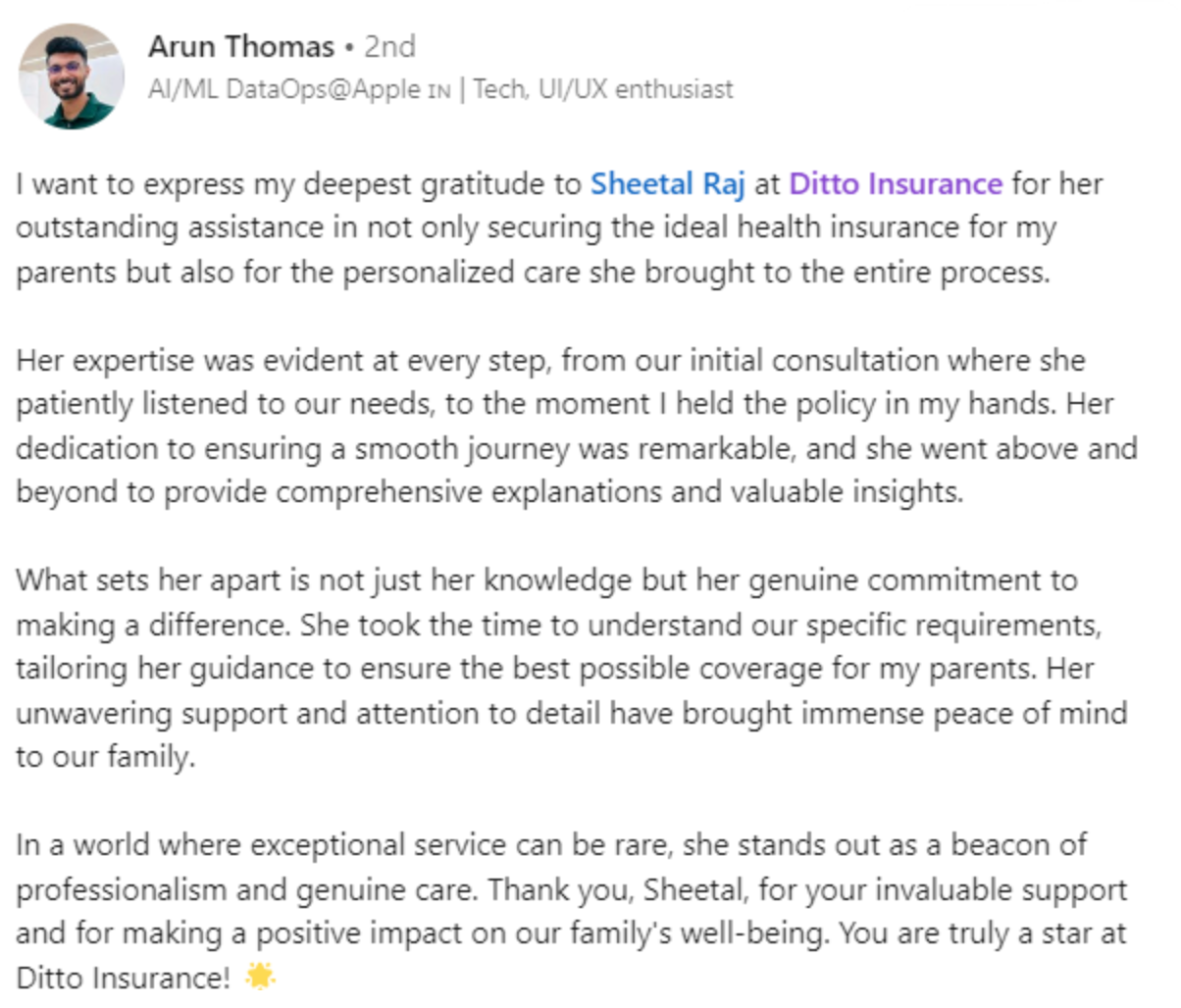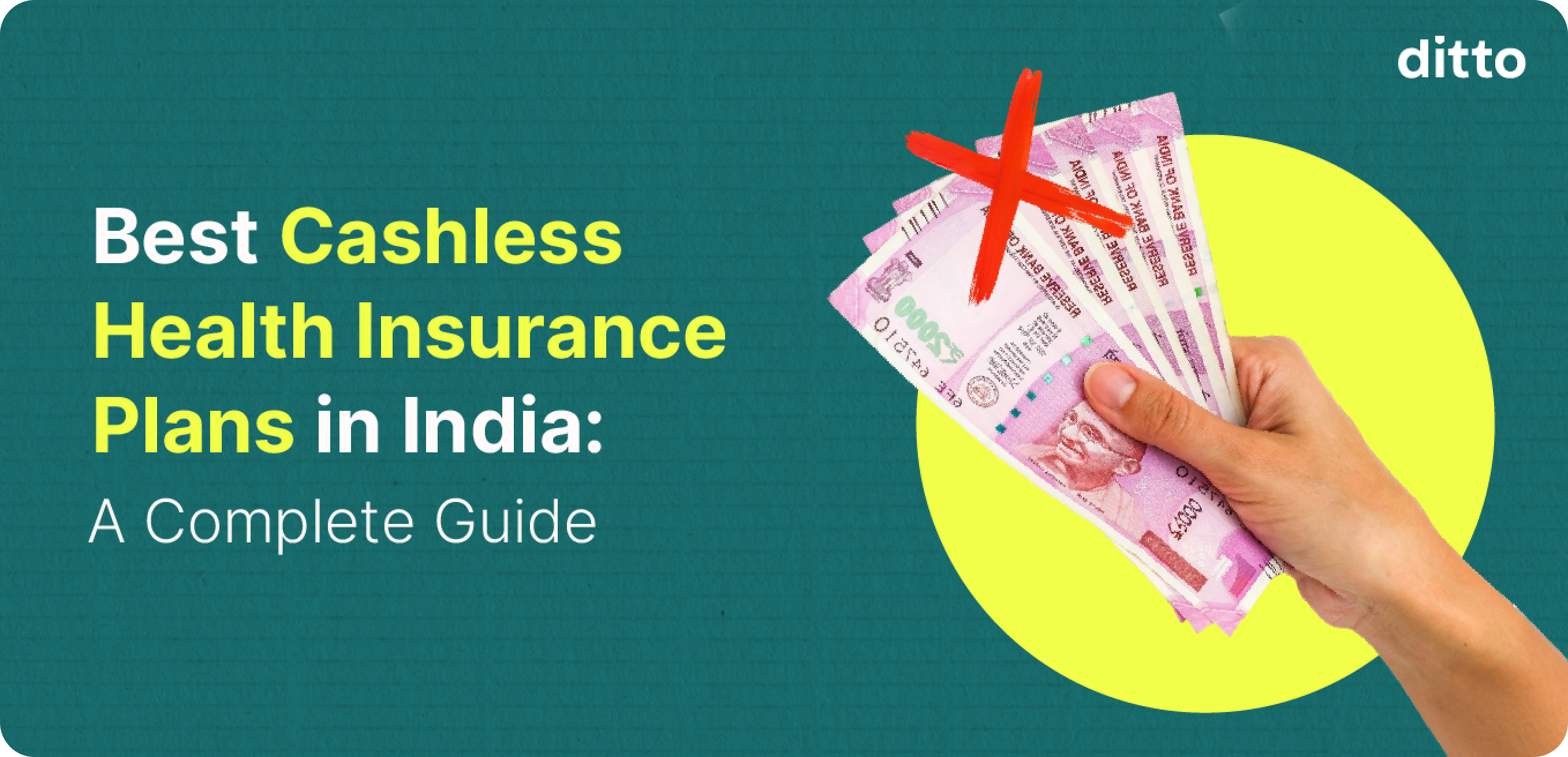What is Cashless Health Insurance?
Cashless health insurance means you can receive treatment at a network hospital tied to your insurer without having to pay large bills upfront. While the idea suggests fully cashless treatment, in reality, some out-of-pocket expenses may still arise for non-covered services, co-pays, or items outside policy coverage.
The insurer directly settles the approved eligible medical expenses with the hospital based on predefined criteria and policy terms, so you don't have to manage the full hospital bill yourself. This arrangement helps reduce financial stress during hospitalization. Although it is important to understand the policy limits and exclusions that determine what amount the insurer covers.
Introduction
We understand that a "truly zero-out-of-pocket" cashless experience is an impossible promise to make, as some minor charge or policy-specific exclusion can always apply. However, many modern health plans now include in-built or optional benefits that significantly reduce these costs.
Even with the best cashless health insurance, policyholders are often forced to pay for a long list of "non-admissible expenses." These expenses, which are legally defined and listed by the IRDAI, can quickly accumulate and create a frustrating out-of-pocket payment even during a cashless claim.
To address this, we analyzed the policy wordings of India’s top health plans to identify those offering the most comprehensive coverage and an almost zero out-of-pocket cashless experience, based on transparent facts, not marketing promises.
Do you have questions about cashless insurance? Book a free consultation call with us and our expert advisors will help you out.
How Does Cashless Health Insurance Work?
Cashless health insurance is a facility where, if you're hospitalized at a network hospital (one that has an agreement with your insurer), the insurance company directly pays your approved medical bills to the hospital.
Here is how a cashless health insurance typically works:
Key Points to Remember
- Each insurer has its own network hospital list. Review it before buying to ensure your preferred hospitals are included.
- Treatment at a non-network hospital requires you to pay upfront and file for a reimbursement claim later.
- Even with the best cashless health insurance, you might still need to pay a small refundable deposit (usually ₹5K–₹50K) at the time of admission. This isn’t a hidden charge. It’s meant to cover any non-admissible or non-payable items (like gloves or service charges) or to safeguard against short delays in insurer payment.
At discharge, the insurer settles the approved claim amount directly with the hospital, and any balance or excess is adjusted or refunded to you. - You may also have to bear expenses that exceed the insurer’s approved limit or your policy’s sub-limits (like room rent, co-payment, or deductible).
- The process requires the insurer's pre-approval (pre-authorization) to go through, which is handled by the hospital and the TPA (Third Party Administrator).
For more details on the claim process, check out our comprehensive guide on How to Claim Health Insurance.
Top 5 Cashless Health Insurance Plans in India 2025
Before we discuss the list, here’s how we decide what plans to feature.
At Ditto, every health plan goes through our six-point evaluation framework. It doesn’t mean these are the only good plans, but that they stand out after being scored across all six pillars.
You can learn more about how we evaluate health insurance plans here.
How Does the Cashless Claim Process For Planned and Emergency Hospitalization Work?
For Planned Hospitalization Claim Process
Planned hospitalizations are procedures like scheduled surgeries or known treatments where there is time to complete the necessary paperwork.
For planned treatments, the insured individual or their family must inform the hospital and initiate the cashless claim process 24 to 48 hours in advance of the planned admission. The hospital sends a pre-authorization request to the insurer. Once approved, you just show your health card and receive treatment.
For Emergency Hospitalization Claim Process
Emergency hospitalizations are unforeseen events like accidents or sudden illnesses. In this situation, the insurer should be notified ideally within 24 hours of admission to the hospital.
Note: If the required timelines are not followed, or if the insurer has an issue with the information provided (e.g., missing documents, incomplete medical history, or unclear treatment notes), the cashless request may be denied.
If the cashless request is denied for any reason, then the insured person has to:
- Pay the hospital bills out of their own pocket.
- Later file for a reimbursement claim by submitting all original required documents to the insurer post-discharge.
Did You Know:
To make cashless claims quicker and fairer, IRDAI has set clear timelines that every insurer must follow:
1) Insurers must approve or reject a cashless hospitalization request within one hour of receiving it.
2) Once the final bill is sent, the insurer must issue discharge within 3 hours. If delayed, the insurer, not the policyholder, must bear the extra hospital charges.
3) Insurers are also expected to work toward 100% cashless settlements across their network hospitals.
What's Covered and Not Covered by Cashless Health Insurance
Here is a breakdown of what is typically covered and what is not covered in a standard cashless health insurance plan.
What is Covered in Cashless Health Insurance
The following expenses are typically settled directly with a Network Hospital:
- In-patient hospitalization (room rent, nursing, doctor fees, ICU charges, medicines, and consumables* during hospitalization)
- Pre-hospitalization expenses (medical tests and consultations before admission)
Note: These are usually reimbursed after the main cashless claim is settled, not paid directly upfront. - Post-hospitalization expenses (follow-ups and prescribed medication after discharge)
Note: These are also usually processed via reimbursement. - Daycare procedures (e.g., cataract surgery, dialysis, chemotherapy)
- Ambulance charges (up to policy limits)
*(items not on the non-admissible list)
What is Excluded in Cashless Health Insurance
These costs are generally not covered by any standard health insurance policy, meaning you must pay them out-of-pocket even if you use a cashless facility.
- Treatments within waiting periods (initial, specific disease, or pre-existing conditions)
- Non-medical consumables (IRDAI-listed Non-Payables) (e.g., toiletries, gloves, syringes, admission kits)
- Other non-medical or personal expenses (visitor food, phone charges, etc.)
- Costs beyond the sum insured limit
- Treatments or medicines outside the network hospital
As we discuss the best cashless health insurance plans, it’s important to mention the latest “Cashless Everywhere” initiative by IRDAI and the General Insurance Council.
It aims to let policyholders get cashless treatment at any hospital in India, not just within the insurer’s network. This is a huge step forward for accessibility. For planned treatments, you must inform your insurer 48 hours in advance (or within 24 hours in emergencies).
That said, the rollout still faces challenges. Many hospitals are resisting uniform pricing, and approvals at non-network hospitals can take longer. Until the system stabilizes, choosing a network hospital remains the more reliable way to ensure a smooth, hassle-free cashless claim.
Why Talk to Ditto for Health Insurance?
At Ditto, we’ve assisted over 8,00,000 customers with choosing the right insurance policy. Why customers like Arun below love us:

✅No-Spam & No Salesmen
✅Rated 4.9/5 on Google Reviews by 15,000+ happy customers
✅Backed by Zerodha
✅Dedicated Claim Support Team
✅100% Free Consultation
You can book a FREE consultation here. Slots are running out, so make sure you book a call now.
Conclusion
Cashless health insurance has made quality healthcare accessible. Here’s the catch: the real value of cashless insurance lies in picking a plan that truly covers you, without any surprise expenses at discharge.
While most policies offer cashless treatment, choose a plan that covers consumables right in the base plan. Pay close attention to how wide the network hospital coverage is (look for the ones within your vicinity), how reliable the insurer has proven to be (check CSR, ICR, complaint ratio), and how smooth and hassle-free their claim process actually is.
FAQs
Which expenses must I pay out-of-pocket, even at a network hospital?
Even when availing cashless facility at a network hospital, you must pay for all non-medical expenses such as admission fees, file charges, disposable masks, gloves, syringes, and toiletries, as these are permanently excluded from health insurance coverage. Additionally, any co-payment amount or charges beyond policy sub-limits like higher room rent must be borne by you.
Can I claim a reimbursement for those out-of-pocket expenses later?
No, reimbursement is generally not available for non-medical excluded items or co-payment amounts since these are your agreed responsibilities. These payments must be settled directly with the hospital and are not reimbursable under your policy.
How do I claim for other medical expenses if paid out-of-pocket?
For covered medical expenses paid outside the hospital stay (like pre and post-hospitalization treatments or treatments at non-network hospitals), you can file a reimbursement claim by submitting all original bills, prescriptions, discharge summaries, and claim forms within the insurer's stipulated timeframe. The insurer will verify and reimburse eligible amounts accordingly.
What is a deductible and how does it affect cashless claims?
A deductible is the amount you need to pay out of pocket before your insurance starts covering the rest. For example, if your policy has a ₹50,000 deductible and the total bill is ₹3 lakh, the insurer will pay ₹2.5 lakh to the hospital, and you’ll pay ₹50,000. So, the deductible doesn’t block your cashless claim, it just defines the amount you pay before your coverage kicks in.
If my hospital bill exceeds the limit of one health policy, can I claim the remaining balance on a cashless basis from my second policy?
If your hospital bill exceeds one policy’s coverage, you can claim the remaining amount from another insurer through reimbursement. Cashless claims apply to one policy at a time, except when both base and super top-up plans are from the same insurer.
Last updated on:









